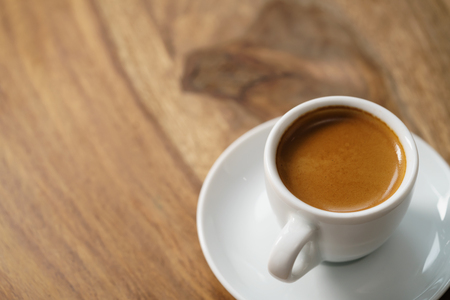Introduction to Italian Coffee Culture
When you think of coffee, Italy is likely one of the first countries that comes to mind. Italian coffee culture has a rich history and plays a significant role in daily life, not just as a beverage but as an experience. Italians have turned coffee drinking into a cherished ritual, with unique traditions that influence how people interact and connect.
The Roots of Italian Coffee
Coffee arrived in Italy in the 16th century, quickly becoming popular in cities like Venice. Over time, Italians developed their own ways of preparing and enjoying coffee. The invention of espresso in the early 20th century changed everything, making it possible to serve high-quality coffee quickly at local bars and cafes.
Key Moments in Italian Coffee History
| Year | Event |
|---|---|
| 1500s | Coffee introduced to Italy via Venice |
| 1901 | Espresso machine invented by Luigi Bezzera |
| 1933 | Moka pot designed by Alfonso Bialetti |
| 1948 | Modern espresso machine perfected by Achille Gaggia |
Coffee Traditions in Everyday Life
In Italy, coffee is more than a drink—its a way to socialize and take breaks throughout the day. Most Italians enjoy their coffee standing at the bar, having a quick chat with friends or the barista. It’s common to see locals start their morning with a cappuccino and a pastry, while an espresso is the go-to choice for a midday pick-me-up.
Popular Types of Italian Coffee Drinks
| Coffee Drink | Description | When Its Enjoyed |
|---|---|---|
| Espresso | Strong, small shot of black coffee served in a tiny cup | Any time of day, especially after meals |
| Cappuccino | Espresso with steamed milk and foam on top | Mainly in the morning, rarely after 11 AM |
| Macchiato | Espresso “stained” with a little milk foam | Morning or afternoon snack time (merenda) |
| Caffè Latte | Larger cup with more steamed milk and less foam than cappuccino | Breakfast time at home rather than at cafes |
| Caffè Corretto | Espresso with a splash of liquor like grappa or sambuca | After dinner or during festive occasions |
The Social Significance of Coffee in Italy
Coffee bars are essential gathering places in Italian towns and cities. These spaces aren’t just for grabbing a drink—they’re where people meet friends, network, and catch up on news. This sense of community around coffee is deeply embedded in Italian culture. Whether it’s sharing an espresso with colleagues or relaxing with family on weekends, coffee brings people together in simple yet meaningful ways.
Why Italian Coffee Culture Matters Worldwide
The traditions and values behind Italian coffee culture have inspired coffee lovers everywhere. From the way drinks are prepared to the rituals around enjoying them, Italy’s approach to coffee has shaped modern café culture across the globe—including in America.
2. Arrival and Evolution of Italian Coffee in America
Italian coffee culture began to leave its mark on the United States in the early 20th century, when waves of Italian immigrants brought their love for espresso and social café life to American shores. Let’s take a look at how these rich traditions traveled across the Atlantic and shaped American coffee habits.
Bringing Espresso Machines to America
The introduction of espresso machines was a game changer for American coffee culture. In the 1920s and 1930s, the first authentic Italian espresso machines started appearing in cities with large Italian communities, such as New York, San Francisco, and Boston. These machines allowed cafes to brew concentrated, robust coffee quickly, which was quite different from the drip coffee that most Americans were used to.
Key Milestones in Italian Coffee’s American Journey
| Year | Milestone | Impact on U.S. Coffee Culture |
|---|---|---|
| 1927 | First espresso machine imported to New York City by Caffè Reggio | Brought authentic Italian espresso experience to Americans |
| 1950s | Italian-style cafes open in major U.S. cities | Became social hubs, introducing cappuccinos and lattes to the public |
| 1980s-1990s | Coffee chains like Starbucks popularize Italian-inspired drinks nationwide | Mainstreamed espresso-based drinks and café culture across America |
The Rise of Italian Cafes in American Cities
As more Italians settled in America, they opened cafes modeled after those back home. These spots weren’t just about grabbing a cup of joe—they were places to socialize, read the paper, or catch up with friends over an espresso or cappuccino. This relaxed “third place” concept was relatively new to Americans who were used to drinking coffee quickly at home or at diners.
Popular Italian Coffee Drinks Introduced in the U.S.
- Espresso: The foundation of Italian coffee culture, served short and strong.
- Cappuccino: Espresso topped with steamed milk and foam—became a breakfast favorite.
- Latte: A milkier option that gained massive popularity among younger Americans.
- Macchiato: Espresso “stained” with a little milk—a trendy choice for those seeking something different.
The influence of these classic Italian drinks is clear today in every corner coffee shop and big-name chain across America. Italian style transformed not only what Americans drink but also how they enjoy their daily cup of coffee—turning it into an experience rather than just a routine.
![]()
3. Espresso, Cappuccino, and Beyond: Italian Drinks in the American Market
When Italian coffee culture made its way to the United States, it brought with it a variety of iconic beverages that would soon become staples in American coffee shops. From espresso to cappuccino and macchiato, these classic Italian drinks were not only embraced by Americans but also adapted to fit local tastes and preferences.
The Arrival of Classic Italian Coffees
Italian immigrants introduced espresso-based drinks to the U.S. as early as the late 19th and early 20th centuries. However, it wasn’t until the rise of specialty coffee shops and national chains in the 1980s and 1990s that these beverages became mainstream. Today, you’ll find espresso machines buzzing behind the counters of nearly every American café.
How Italian Coffees Were Adapted in America
| Italian Original | American Version | Key Differences |
|---|---|---|
| Espresso | Espresso Shots / Americanos | Often served as single or double shots, or diluted with hot water for a milder taste (Americano). |
| Cappuccino | Cappuccino (often larger) | Typically served in bigger cups with more milk foam; sometimes flavored syrups are added. |
| Macchiato | Larger, sweeter Macchiatos (Caramel Macchiato) | Original is a simple “stained” espresso with a dash of milk; American versions can be iced, sweetened, and layered. |
| Latte | Café Latte (extra large sizes) | Lattes in the U.S. are usually much larger and often customized with flavors. |
The Rise of Customization and Flavors
A big part of how Italian coffee influenced American trends is through customization. While traditional Italian coffee is about simplicity, American coffee culture loves options—different milk types, extra shots, flavored syrups, and iced versions. Coffee chains like Starbucks turned these Italian staples into creative drinks tailored to American palates.
Coffee Chains and Everyday Life
The popularity of espresso-based drinks helped fuel the growth of major coffee shop chains across the U.S., making these Italian-inspired beverages a part of daily routines for millions of Americans. Whether grabbing a cappuccino on the way to work or meeting friends over lattes at a café, the influence of Italian coffee culture is clear—and still growing.
4. Changing American Coffee Habits and Cafe Culture
Italian coffee culture has deeply influenced how Americans enjoy their daily cup of coffee. Over the years, certain Italian customs have made their way into American coffee shops, changing not just what we drink but also how we experience coffee.
The Italian Way: Standing at the Bar
One classic Italian tradition is enjoying an espresso while standing at the bar. In Italy, this quick, social ritual makes coffee a brief moment of connection. While Americans used to associate coffee with sitting down for a long period, many U.S. cafes now offer “espresso bars” where customers can sip their drinks on the go or in a more social, bustling setting—just like in Rome or Milan.
Savoring Coffee Slowly vs. On-the-Go
Another shift inspired by Italian habits is the idea of savoring your coffee slowly. Traditionally, Italians take time to enjoy each sip, making it a mindful experience rather than just a caffeine fix. While American culture still leans heavily toward grab-and-go options, more people are choosing to slow down and appreciate the taste and aroma of their brew. This change is especially noticeable in specialty cafes that encourage customers to linger and enjoy their coffee as part of their day.
The Rise of Cafe Culture in America
Perhaps the most significant impact is the rise of cafe culture itself. Inspired by Italy’s lively coffee bars and community spaces, American cities have seen a boom in cafes designed for socializing, working, and relaxing. These spaces go beyond simply serving coffee—they become neighborhood hubs where people gather, work remotely, or catch up with friends.
Comparing Italian and American Coffee Habits
| Italian Coffee Habit | American Adaptation |
|---|---|
| Standing at the bar for espresso | Espresso bars and fast counter service in cafes |
| Savoring coffee slowly | Specialty cafes encouraging customers to relax and linger |
| Cafes as community gathering places | Rise of neighborhood coffee shops and co-working spaces |
Everyday Influence on American Life
Today, these Italian-inspired habits are visible everywhere—from busy urban espresso counters to cozy local cafes with inviting atmospheres. Whether you’re grabbing a quick shot before work or spending hours chatting over cappuccinos with friends, Italian coffee customs continue to shape how Americans enjoy their favorite beverage.
5. Modern Trends and the Italian Legacy in Today’s U.S. Coffee Scene
Walk into almost any coffee shop across America today, and you’ll spot a variety of Italian influences everywhere—from the drinks on the menu to the way your coffee is served. Let’s take a closer look at some of the top trends in the U.S. coffee scene that have deep roots in Italian coffee culture.
Specialty Coffee: Craftsmanship Inspired by Italy
The rise of specialty coffee in the United States can be traced back to Italian traditions that focus on craftsmanship and attention to detail. American baristas now take pride in every step, from selecting high-quality beans to perfecting brewing techniques—much like their Italian counterparts have done for generations.
The Art of Latte: A Creative Touch from Italy
Latte art has become a signature feature in American coffee shops, adding an artistic flair to each cup. This trend began with Italian baristas who first mastered the skill of pouring milk into espresso to create beautiful patterns. Now, customers across the U.S. enjoy hearts, rosettas, and even more elaborate designs atop their morning lattes.
Quality Beans: The Heart of Every Cup
Italian coffee culture places huge importance on using premium beans for every espresso shot or cappuccino. American coffee shops have embraced this value, with many focusing on sourcing ethically grown, single-origin beans. This shift toward quality over quantity has elevated the standard for what makes a great cup of coffee.
Key Italian Influences in U.S. Coffee Shops
| Italian Tradition | American Trend | Description |
|---|---|---|
| Espresso-based drinks | Lattes, cappuccinos, macchiatos | Most popular menu items trace back to classic Italian recipes. |
| Café culture | Coffee shop hangouts | Spaces for socializing inspired by Italy’s community-focused cafés. |
| Latte art | Creative milk foam designs | A visual treat that adds personality to every cup. |
| High-quality beans | Specialty coffee movement | An emphasis on sourcing and roasting top-tier beans. |
| Pride in preparation | Barista competitions & training | A dedication to skill and consistency behind the bar. |
The impact of Italian coffee culture continues to shape America’s favorite ways to enjoy coffee today. Whether you’re grabbing a quick espresso or lingering over a beautifully crafted latte, you’re experiencing traditions that started in Italy but found a new home in U.S. coffee shops.


